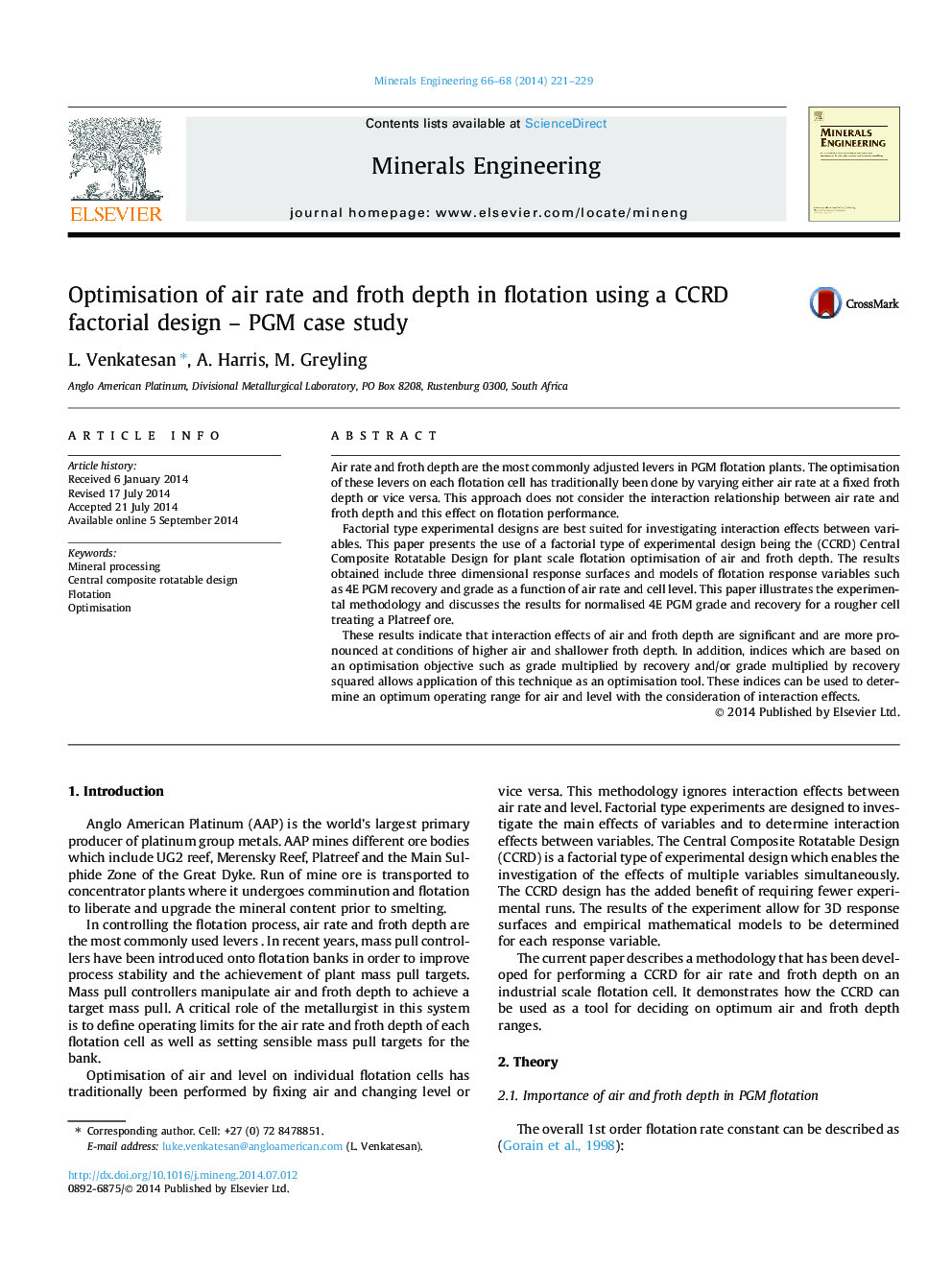| Article ID | Journal | Published Year | Pages | File Type |
|---|---|---|---|---|
| 233171 | Minerals Engineering | 2014 | 9 Pages |
•A Central Composite Rotatable Design (CCRD) was applied to a plant flotation cell.•This was done for optimisation of air rate and cell level.•3D response surfaces of normalised 4E PGM recovery and grade are determined.•The response surfaces indicate that interaction effects are present.•Optimisation can be performed graphically using response surfaces and indices.
Air rate and froth depth are the most commonly adjusted levers in PGM flotation plants. The optimisation of these levers on each flotation cell has traditionally been done by varying either air rate at a fixed froth depth or vice versa. This approach does not consider the interaction relationship between air rate and froth depth and this effect on flotation performance.Factorial type experimental designs are best suited for investigating interaction effects between variables. This paper presents the use of a factorial type of experimental design being the (CCRD) Central Composite Rotatable Design for plant scale flotation optimisation of air and froth depth. The results obtained include three dimensional response surfaces and models of flotation response variables such as 4E PGM recovery and grade as a function of air rate and cell level. This paper illustrates the experimental methodology and discusses the results for normalised 4E PGM grade and recovery for a rougher cell treating a Platreef ore.These results indicate that interaction effects of air and froth depth are significant and are more pronounced at conditions of higher air and shallower froth depth. In addition, indices which are based on an optimisation objective such as grade multiplied by recovery and/or grade multiplied by recovery squared allows application of this technique as an optimisation tool. These indices can be used to determine an optimum operating range for air and level with the consideration of interaction effects.
